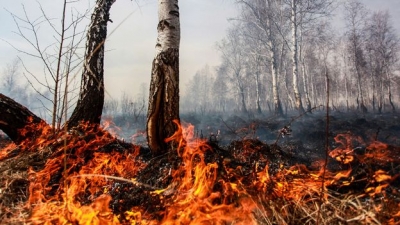
Summer wildfires in the Arctic are not uncommon. But there has been an increasing threat from holdover fires or zombie fires and that’s worrying scientists. In 2019, areas such as Siberia, Russia, Alaska, Greenland and Canada saw record-breaking summer temperatures and one of the worst wildfire seasons. In 2020, Arctic wildfire season began two months early and was unprecedented in scope. Scientists identified a new driver of recent Arctic fires – zombie fires.
What are zombie fires?
Like the fictional creature zombie these fires too rise from the dead and cause untoward danger. After extinguishing wildfires, firefighters often soak the ground with water and declare victory. But certain fires do not completely die down. They keep burning under the ground even after flames on the surface are gone. They lay dormant beneath the undergrowth and smoulder undetected through wet and cold winters. They retain their heat until warmer temperatures and dry conditions reignite the flames. These are called zombie or holdover fires. Smouldering is the most persistent type of combustion on earth. They are like an army of zombies and very difficult to stop, say scientists.
Zombie fires occur in the Arctic because of permafrost peatlands, which are good fuels. Peats are carbon-rich soils that accumulate as plants slowly decay, sometimes over thousands of years. In the Arctic, the peats are covered by permafrost, which is the frozen layer on the surface. Permafrost regions are the most carbon-dense ecosystems on earth.
So, when peats bum, there is the additional threat of carbon emission. According to an estimation, peat fires can release 100 times the carbon that a wildfire does. That’s terrible both for the planet and for human health. By the time the 2020 fire season waned last August the blazes had emitted a record 244 megatonnes of carbon dioxide — that’s 35% more than 2019.
It’s a feedback loop: as peatlands release more carbon, global warming increases, which thaws more peat and causes more wildfires.
Picture Credit : Google




